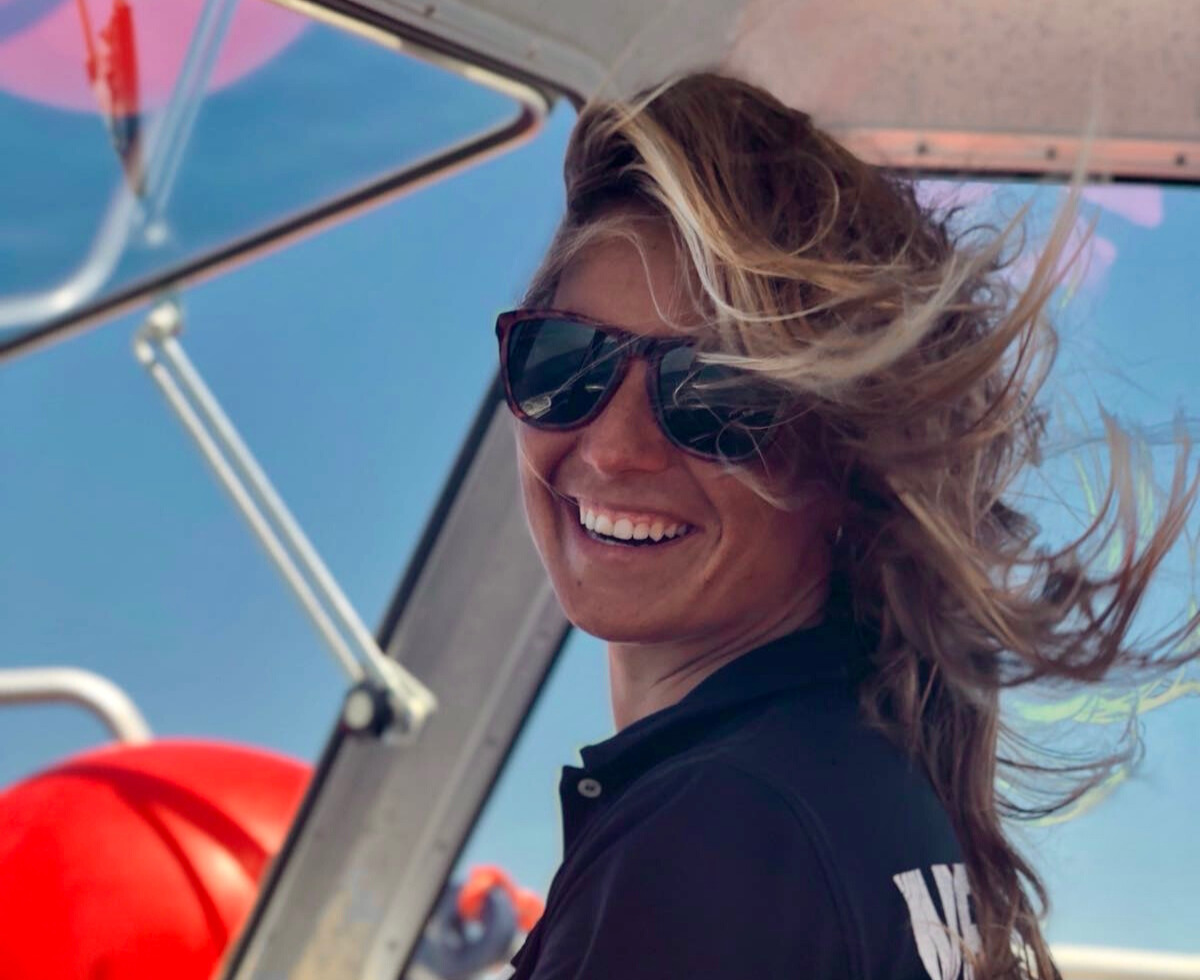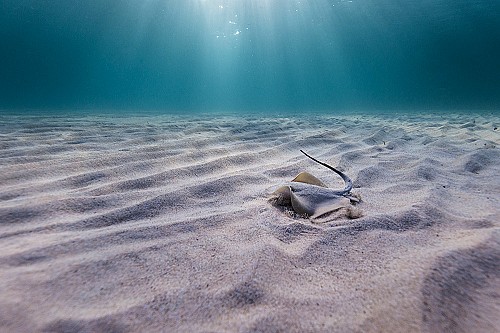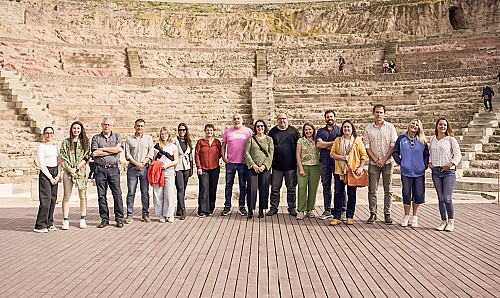Nuria Costa: ‘My mother says I learned to dive before I began to talk’
Published 13.02.2025
Share

Nuria Costa is an oceanographer, scuba diving instructor, boat skipper, and photographer. She is also the winner of MARE's Accésit Denuntiare, with Deadly ghost nets, an image that shows the problem of ghost fishing nets in the Balearic Sea. Born in Valencia and with Ibizan roots, she lives on the largest of the Pitiusas.
Can you tell us the story of your winning MARE 2024 photo? Where did you take it?
I took it at Punta Gavina, in Formentera. It is one of the most famous dives and one of my favourites, with rocky platforms, Posidonia reefs, and large boulders. That day we dived a bit deeper and I was surprised to see this huge ghost fishing net among all the pinnacles. A lot of marine life – sea bass, some lobster, and even a triggerfish, if I remember correctly – had been left in the net, and some fish had died. It's a real shame to find these nets at such popular and well-known dive sites. The life that is trapped there is wasted, because the fishers do not profit from it.
Underwater photography allows you to see things that many people don't see. What do you like most about this profession?
What I like most is being able to capture the beauty and fragility of ecosystems. When I go diving, I experience unique and unrepeatable moments. And the resulting image is not only artistic but by showing the richness and biodiversity of the sea it is also a way to raise awareness of the importance of conserving it.
‘By showing the richness and biodiversity of the sea it is also a way to raise awareness of the importance of conserving it’.
Do you come across many images worthy of ‘Denuntiare’?
Fortunately, we don't usually find nets like the ones in the image, although it is also true that we often dive in reserve areas where there is usually more awareness. Plastics and issues related to pollution are more common. In less frequented areas there tends to be more rubbish than in preserved areas, as the divers themselves pick up what they find. It's our playground and we like to keep it clean.
This is not the first time you have won a MARE prize. How did your relationship with the competition begin?
If I remember correctly, it was when I was working in a diving centre in Formentera. Sara [the person who created MARE] walked in, introduced us to the competition and gave us some posters. I found it very interesting and I saw it as an opportunity to take the leap into competitions. I had never been encouraged to do it; I didn't think my photos were good enough. But what better way to do it than with a contest at home, in the Mediterranean! I’ve taken part each year will continue to do so.
What do you like to explain with your photos?
What I most like to see and show is the behaviour between species. We still have a lot to discover about the underwater world. Putting on a mask, capturing the interaction of marine life, and showing it to people who haven't been in the water... for me it's marvellous.
Do do you think the Balearic sea is healthy?
Although it has obviously been degenerating a little, I think it is quite resilient. There are times or years when it has had less life or there has been an invasion of algae, but I seem to see it return to its original state. This is one thing that has caught my attention.
Is there much difference between diving in a marine reserve and diving in a non-protected area?
Yes, a lot, both in the amount and the variety of life you encounter. As a general rule, we want to go to the reserve, where everything is more controlled, the habitat is better preserved, and there is much more life. And also for proximity. In Ibiza and Formentera we have a very good area: Es Freus.
What are your favourite areas to take photos?
I take advantage of every dive. I always find something worth photographing. I try to find an interesting angle or focus. In terms of location, the Mediterranean tends to have better visibility, although you find more life in more tropical places. Still, I'm very fond of photographing in the Mediterranean. But wherever I go, I take my camera with me. That means carrying an extra suitcase, but it's always worth it.
‘I take advantage of every dive. I always find something worth photographing’.
Do you think photography can contribute to marine conservation?
Yes, because it allows you to show such a fragile and unknown world, as well as reach people who have never been underwater before. And competitions like MARE help you reach a lot more people, of course.
Can you tell us about a diving experience that you remember in particular?
One of the first experiences of species behaviour that I really enjoyed was seeing cleaner shrimp in the mouths of moray eels. The two species live in symbiosis and the shrimp act as dentists for the moray eels. For their part, the moray eels are respectful, keeping their mouths open and being very careful when closing them. To see a species that seems aggressive with such a fragile and delicate behaviour is very striking.
Also, one of the experiences I remember most fondly is my first encounter with the southern oceanic manta rays in Bali. Theyhave the largest brain-to-body ratio in the world. They are very intelligent and when you are with them you understand that.
‘One of the experiences I remember most fondly is my first encounter with the southern oceanic manta rays’.
Have you always had a relationship with the sea? Why did you decide to dedicate yourself to it?
I grew up near the sea and, inevitably, I have always had a love and passion for it. My mother says that I learned to dive before I began to talk, and I guess she's right. I spent my summers in Ibiza, in the family home. When we went to the beach and I put on my mask and got into the water, they had already lost me. When I was old enough to dive, which is 14 years old, I was given a diving course as a Christmass gift, and since then I haven't stopped. In addition, I have been getting my family and acquaintances involved in the marine world. What I have always wanted was to be in the sea and to transmit my passion for it, and that is why I decided to promote its conservation through diving.
QUICK TEST FOR SEA LOVERS
A book: The Swarm, by Frank Schätzing
An image that evokes the Balearic Islands: Mediterranean paradise.
A marine species: Oceanic manta ray (Manta birostris)
A person or organisation of reference: Sylvia Earle
A beach: Cala Comte
Optimistic, realistic, or pessimistic: Too realistic




